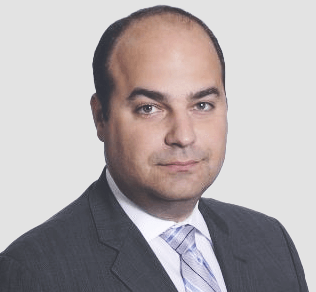
Raising a private equity fund has been hard-going during the last 36 months, with a few minor exceptions.
Rising inflation and elevated interest rates have seen sharp declines in private equity exit activity, which has bottlenecked distributions to investors resulting in limited capital to plough into the next tranche of private equity funds.
Limited flows of capital from private equity programs have given LPs fewer options, and in a choppy, volatile market, most investors have set aside the capital that they do have available for a select cohort of the biggest private platforms, seen as the safest pairs of hands.
The upshot is that a bigger share of the smaller private equity pie has been absorbed by a smaller group of managers. Bain & Co analysis shows that in the buyout space from January to May this year, the ten largest funds to close took out almost two-thirds (64%) of total capital raised during the period.
As capital has been funnelled into fewer hands, managers have had to adapt and explore other options for fundraising and new investor pools.
Private wealth and non-institutional capital has been an obvious avenue to turn down, and feeder funds have provided one of the most valuable channels to reach this emerging cohort of private equity investors.
In the third of a four-part series exploring the alternative routes to liquidity that managers have available, Alter Domus looks into how feeder funds can help managers sustain fundraising efforts against a challenging backdrop.
Part 3: Feeder Funds
At a point in the cycle where institutional investors have taken a “risk-off” approach to new private equity allocations, the potential of the non-institutional space has been pushed firmly into the spotlight.
Managers have seen non-institutional capital as a long-term driver of private markets assets under management (AUM) growth. Bain & Co forecasts have estimated that during the next ten years individual allocations to alternative assets (AUM) could triple from current levels to reach as much as US$12 trillion.
As the supply of institutional capital has tightened, however, managers have accelerated efforts to secure more capital from non-institutional clients.
One of the primary channels for reaching individual investors have been feeder funds, and the private markets ecosystem has been ramping up efforts to increase capacity to reach more potential non-institutional investors.
What is a feeder fund?
Feeder funds are investment vehicles to pool together capital commitments from groups of investors and then funnel this capital into an umbrella or master fund, deploying the capital in new investments.
The feeder fund structure has helped to widen access to private markets investments by bringing down the investment minimums that would usually be required secure exposure to new a fund.
By pulling together capital from groups of non-institutional investors, feeders can amass sufficient scale to gain traction with GPs on the fundraising trail, but keep investment minimums at a much lower threshold than if an individual were to invest in a fund directly.
Feeder funds have been around for a long time, but predominantly through the private wealth divisions of investment banks, who draw in allocations from high-net worth clients and then effectively interact with managers as single LPs.
As more individuals and non-institutional investors have noted the returns on offer in alternative assets, however, other channels with feeder fund attributes have emerged to service growing demand. Online platforms, such as Moonfare and Reach Alternative Investments, to name but a few, are examples of innovative, tech-enabled feeder fund platforms that enable investors to make allocations with investment minimums as low as €50,000 in Europe and $75,000 in the US.
Putting the right rails in place
For managers that are seeking capital from non-institutional investors via feeder fund structures, it is crucial that managers have the necessary back-office infrastructure in place to manage the additional requirements and obligations that come with taking on investment through feeder fund structures. And that’s where Alter Domus comes in.
The underlying investors in feeder funds will require different levels of education and reporting to what managers are used to in an institutional context. Private banks and online platforms will provide invaluable support in curating reporting and investor materials to align with what non-institutional investors require, but it ultimately does come down to manager to lead on the production of regular reporting and net asset valuations for a non-institutional audience.
The requirement for more frequent reporting, and reporting that differs from what is already produced for institutional backers, does place added workloads onto back-office teams. We have found that the use of technology-embedded bespoke processes can elevate this burden.
Workloads are further ramped up as targeting a non-institutional investor also requires significant investment in the production of investor marketing and education materials. The back-office becomes a crucial enabler of front office fundraising and marketing efforts, are teams require information packs and educational materials to engage with individual investors, explain how private equity works, and what investors should consider when allocating to private equity.
There are also individual tax considerations that managers have to be aware of, as well as regulatory frameworks covering individual investors in different jurisdictions.
Depending on the jurisdiction, non-institutional investors have to meet certain eligibility criteria. This is usually linked to a minimum levels of investment assets or evidence of investment expertise, in order to qualify as private markets investors.
Onboarding high volumes of non-institutional investors and making the required know-your-client (KYC) checks can also become overwhelming for managers that don’t have operating models of a certain scale.
Seeking support
Working with a third-party fund administrator, like Alter Domus, can help managers seeking to raise capital from feeder funds with scalable resource and extensive non-institutional experience.
With an extensive global footprint and large compliance teams, Alter Domus has the capability to cover the eligibility criteria and tax arrangements of underlying feeder fund investors around the worlds, freeing up GPs to focus on winning new non-institutional clients knowing that regulatory and tax issues are being manager by an experienced and trusted partner.
Third-party administrators will also have the bandwidth to invest in proprietary technology, AI-powered software and automation to process high volume back-office tasks – a helpful resource for managers that find they have to manage rapidly rising volumes of KYC checks and client onboarding as more individual investors gain access to their funds.
The opportunity to secure more capital from individuals presents not just an invaluable short-term fix for slowing institutional allocations, but a long-term opportunity to build a new category of LP that could be the main driver of long-term AUM industry growth.
Seizing this opportunity requires not just an excellent investment track record and returns profile, but a robust operating backbone to handle the particular demands that come with serving a non-institutional client base.
An experienced fund administration partner can be there to support managers along every step of that journey.




